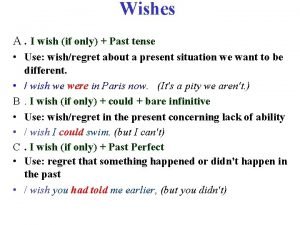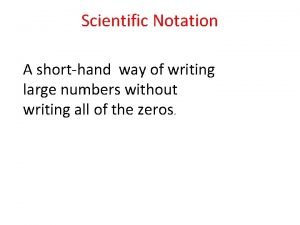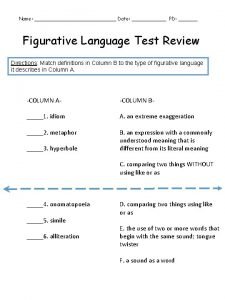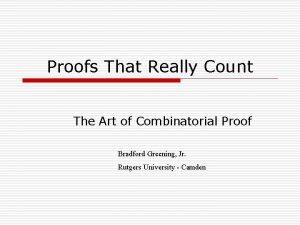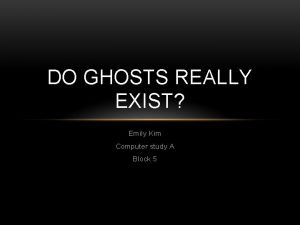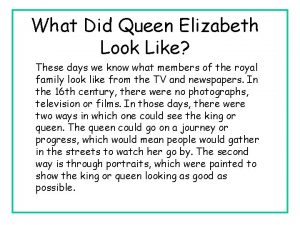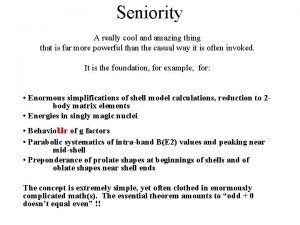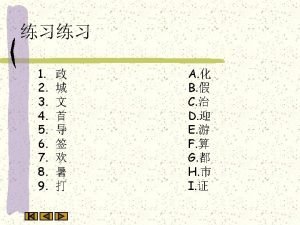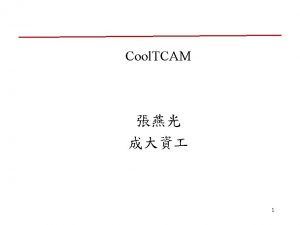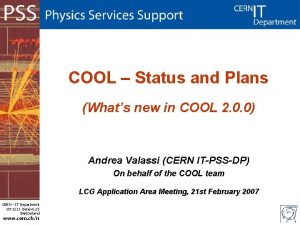Seniority A really cool and amazing thing Seniority







![Magic nuclei – single j configurations: jn [ e. g. , (h 11/2)2 J] Magic nuclei – single j configurations: jn [ e. g. , (h 11/2)2 J]](https://slidetodoc.com/presentation_image/9f8b66b302469e7da78c9f9a39ef3585/image-8.jpg)






























- Slides: 38

Seniority A really cool and amazing thing

Seniority • First, what is it? Invented by Racah in 1942. • Secondly, what do we learn from it? • Thirdly, why do we care – that is, why not just do full shell model calculations and forget we ever heard of seniority? • Almost completely forgotten nowadays because big fast computers lessen the need for it. However, understanding it can greatly deepen your understanding of structure and how it evolves. • Start with shell structure and 2 - particle spectra – they give the essential clue.





![Magic nuclei single j configurations jn e g h 1122 J Magic nuclei – single j configurations: jn [ e. g. , (h 11/2)2 J]](https://slidetodoc.com/presentation_image/9f8b66b302469e7da78c9f9a39ef3585/image-8.jpg)
Magic nuclei – single j configurations: jn [ e. g. , (h 11/2)2 J] Short range attractive interaction – what are the energies?





Tensor Operators Don’t be afraid of the fancy name. Ylm e. g. , Y 20 Even, odd tensors: Quadrupole Op. k even, odd To remember: (really important to know)!! δ interaction is equivalent to an odd-tensor interaction (explained in de. Shalit and Talmi)


Yo u ca n ha ve 20 0 pa ge s of th is … .

Or, this:

Seniority Scheme – Odd Tensor Operators (e. g. , magnetic dipole M 1) Fundamental Theorem *0 + even ≠ odd





Yaaaay !!!

Now, use this to determine what v values lie lowest in energy. For any pair of particles, the lowest energy occurs if they are coupled to J = 0. J 0 0 lowest energy for occurs for smallest v, largest V 0 largest lowering is for all particles coupled to J = 0 lowest energy occurs for v =0 (any unpaired nucleons contribute less extra binding from the residual interaction. ) v = 0 state lowest for e – e nuclei v = 1 state lowest for o – e nuclei Generally, lower v states lie lower than high v a) g. s. of e – e nuclei have v = 0 b) Reduction formulas of ME’s jn jv achieve a huge simplification J = 0+ ! n-particle systems 0, 2 particle systems THIS is exactly the reason seniority is so useful. Low lying states have low seniority so all those reduction formulas simplify the treatment of those states enormously.

Since v = 0 ( e – e) or v = 1 ( o – e) states will lie lowest in jn configuration, let’s consider them explicitly: Starting from V 0 δαα΄ = 0 if v = 0 or 1 No 2 -body interaction in zero or 1 -body systems Hence, only second term: (n even, v = 0) (n odd, v = 1) These equations simply state that the ground state energies in the respective systems depend solely on the numbers of pairs of particles coupled to J = 0. Odd particle is “spectator”

Further implications Energies of v = 2 states of jn E = Independent of n !! Constant Spacings between v = 2 states in jn (J = 2, 4, … j – 1) E = = All spacings constant ! Low lying levels of jn configurations (v = 0, 2) are independent of number of particles in orbit. Can be generalized to =



For odd tensor interactions: < j 2 ν J′│Ok│j 2 J = 0 > = 0 for k odd, for all J′ including J′ = 0 Proof: even + even ≠ odd = V 0 + Int. for J ≠ 0 No. pairs x pairing int. V 0 < 0 ν = 0 states lie lowest g. s. of e – e nuclei are 0+!! ΔE ≡ E(ν = 2, J) – E(ν = 0, J = 0) = constant ΔE│ ν ≡ E(ν = 2, J) – E(ν = 2, J ) = constant ν=2 8+ 6+ 4+ ν=2 2+ ν=0 n 0+ 2 4 6 jn Configurations 8 ν=0

To summarize two key results: For odd tensor operators, interactions • One-body matrix elements (e. g. , dipole moments) are independent of n and therefore constant across a j shell • Two-body interactions are linear in the number of paired particles, (n – v)/2, peaking at midshell. The second leads to the v = 0, 2 results and is, in fact, the main reason that the Shell Model has such broad applicability (beyond n = 2)

So: When is seniority a good quantum number? (let’s talk about configurations) • If, for a given n, there is only 1 state of a given J Then nothing to mix with. v is good. • Interaction conserves seniority: odd-tensor interactions.

7/2 Think of levels in Ind. Part. Model: First level with j > 7/2 is g 9/2 which fills from 40 - 50. So, seniority should be useful all the way up to A~ 80 and sometimes beyond that !!!





This is why nuclei are prolate at the beginning of a shell and (sometimes) oblate at the end. OK, it’s a bit more subtle than that but this is the main reason. Another example: Consider states of a j 2 configuration: 0, 2, 4, 6, …: The 2, 4, 6, … have seniority 2, so the B(E 2: 4+ 2+) is an even tensor ( cause E 2) seniority conserving transition, and hence follows the above rule. We will see an example of this next.

2+

 That was a really foolish thing to say
That was a really foolish thing to say Anyway the thing is what i really mean
Anyway the thing is what i really mean Tenure vs seniority
Tenure vs seniority Lds general authorities seniority
Lds general authorities seniority Priority of functional groups
Priority of functional groups List of functional groups in order of priority
List of functional groups in order of priority Jetblue alpa contract
Jetblue alpa contract The basic human aspirations are
The basic human aspirations are Does a string and cup really work
Does a string and cup really work Im ok youre not ok
Im ok youre not ok Your love is amazing steady and unchanging
Your love is amazing steady and unchanging Hallelujah your love makes me sing lyrics
Hallelujah your love makes me sing lyrics Past tense wish
Past tense wish Scientific notation
Scientific notation What leaders really do hbr
What leaders really do hbr Tell us about a film you really like
Tell us about a film you really like Scientific notation is a shorthand way of writing really
Scientific notation is a shorthand way of writing really Probably armed possibly not analysis
Probably armed possibly not analysis Tongue twisters in english how much wood
Tongue twisters in english how much wood It really burned me up when you yelled at me.
It really burned me up when you yelled at me. A marketer can really satisfy everyone in the
A marketer can really satisfy everyone in the Heavenly father are you really there
Heavenly father are you really there Heavenly father are you really there
Heavenly father are you really there Propaganda definition
Propaganda definition Proofs that really count
Proofs that really count Personification practice
Personification practice Do ghosts really exist
Do ghosts really exist Breaking bad powerpoint template
Breaking bad powerpoint template Tell me whats really going on
Tell me whats really going on What did jesus look like
What did jesus look like What did elizabeth i really look like
What did elizabeth i really look like It's really fascinating
It's really fascinating Doesnt really matter
Doesnt really matter People really hate elephants on compact cars
People really hate elephants on compact cars Tell me whats really going on
Tell me whats really going on Really simple syndication initial release
Really simple syndication initial release I really like this furniture she said
I really like this furniture she said Enjoyed the experience
Enjoyed the experience What are the 7 steps of the scientific method
What are the 7 steps of the scientific method












